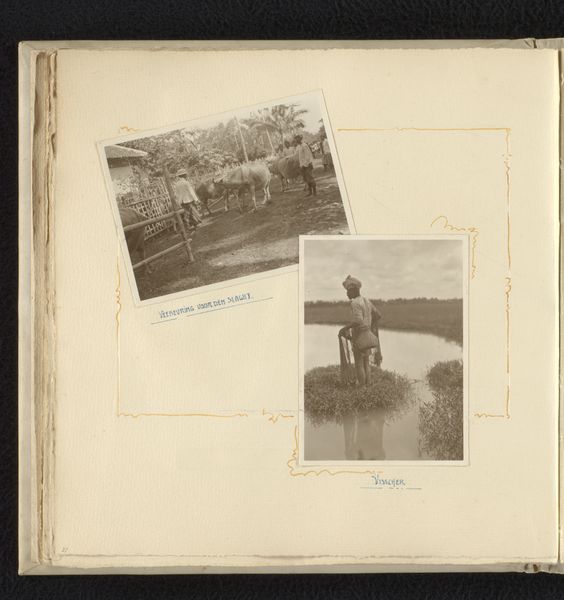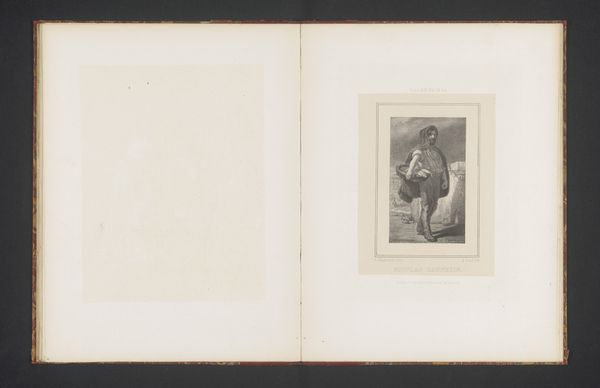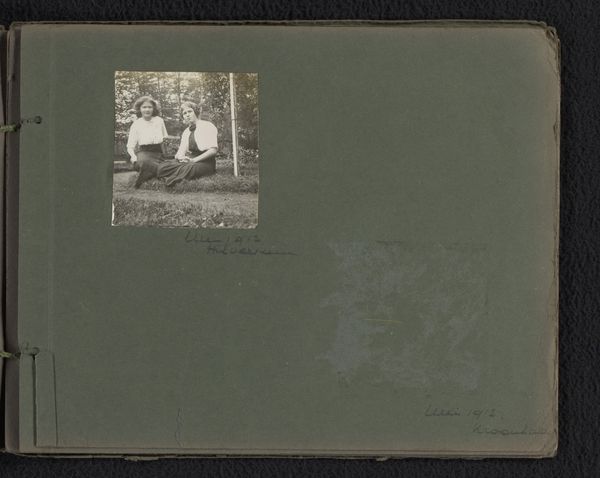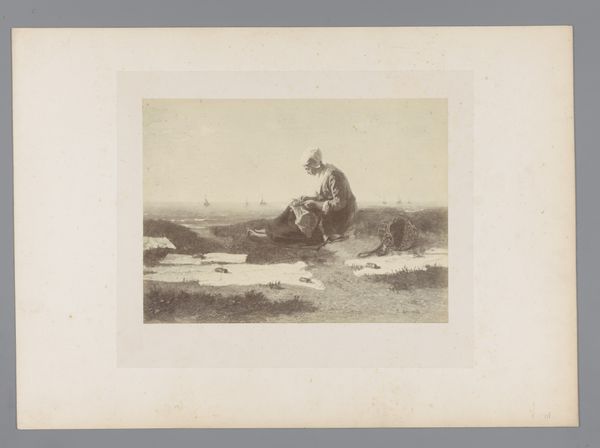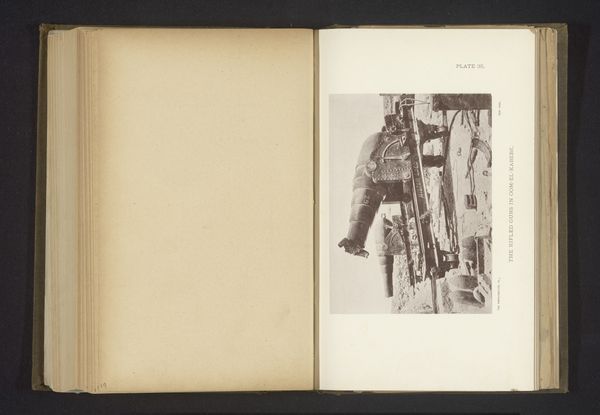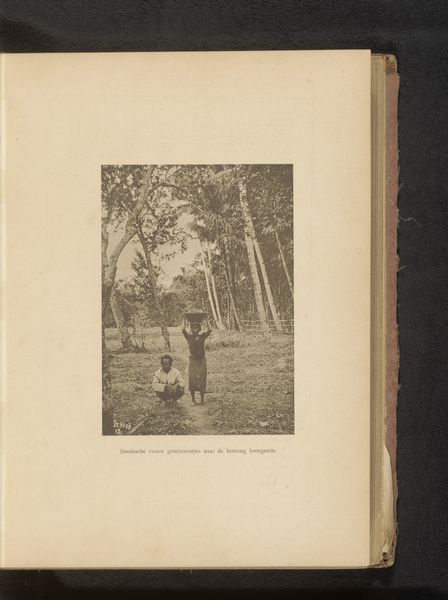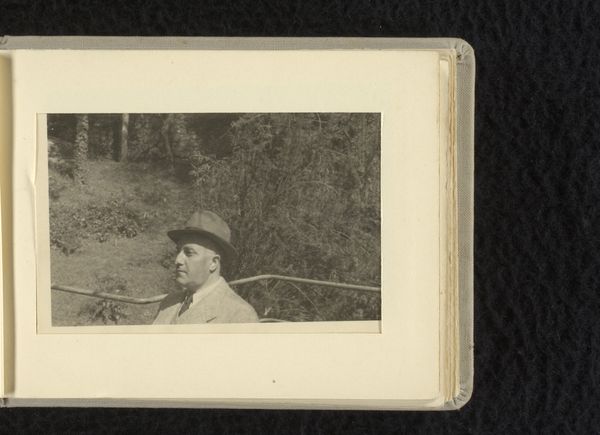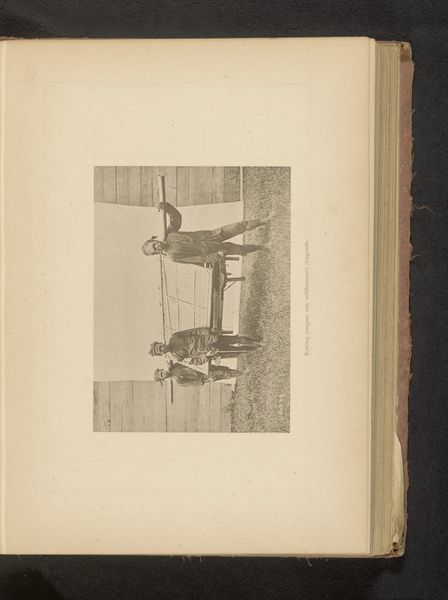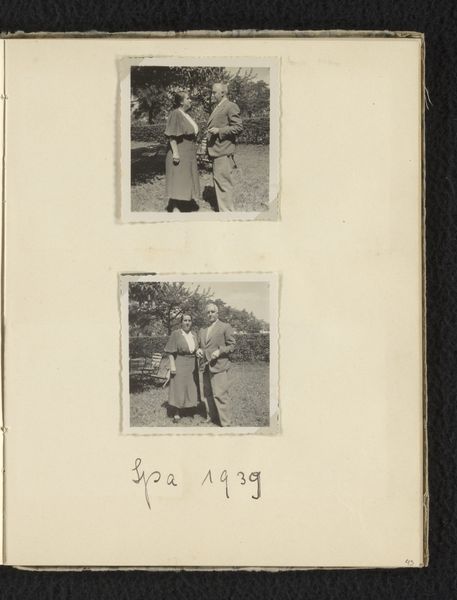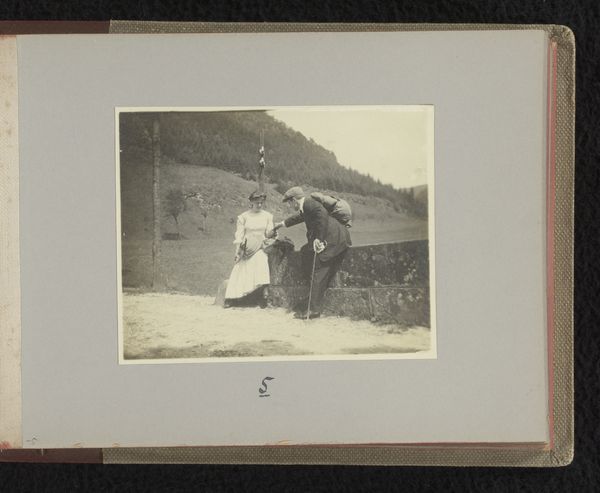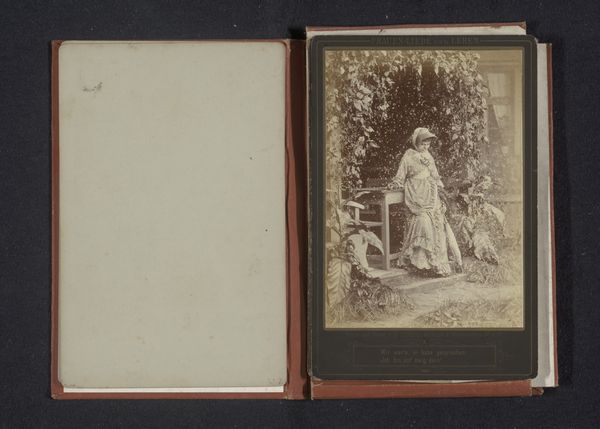
photography
#
portrait
#
african-art
#
photography
Dimensions: height 161 mm, width 110 mm
Copyright: Rijks Museum: Open Domain
Curator: This striking photograph, entitled "Portret van het stamhoofd van Mbinga," was captured by Franz Thonner in 1896. Editor: There's an immediacy to his gaze that’s arresting, a grounded energy that suggests a profound connection to the land behind him. I also feel there is an element of resistance. Curator: Indeed. The work, though presented as a portrait, exists within the complicated framework of colonial photography and documentation. How do we understand its role in shaping European perceptions of African leaders at the time? Editor: The details in his ornamentation become critical. The bracelets, anklets, and necklace–each a possible indicator of status, power, or spiritual significance. What narratives were intended, and what narratives might be reclaimed or resisted through his deliberate self-presentation? Curator: That's precisely what I find so compelling. While Thonner aimed to create an ethnographic record, we must also consider the potential for Chief Mbinga to assert his own identity within the frame. The act of sitting for the photograph can be interpreted as an exercise of agency, albeit within asymmetrical power relations. Editor: I also see it as an act of cultural preservation. The image becomes a potent symbol against the homogenizing forces of colonialism. I keep returning to his confident gaze, as if daring us to truly see him beyond the confines of our preconceived notions. Curator: Ultimately, perhaps the portrait asks us to confront the very gaze we bring to it, and to reflect on the history of representation and its ongoing impact. Editor: Yes, and to ask ourselves how we can move forward with a decolonized and respectful perspective. The symbols we decode reveal cultural memory, but a memory filtered through so many imposed lenses.
Comments
No comments
Be the first to comment and join the conversation on the ultimate creative platform.

